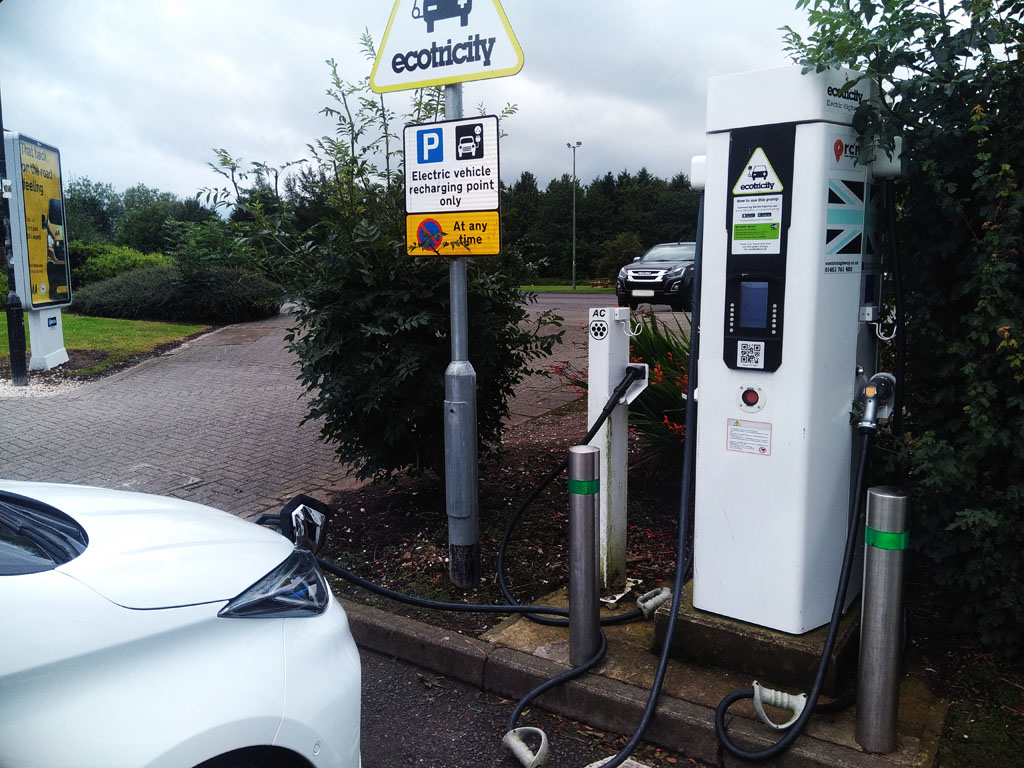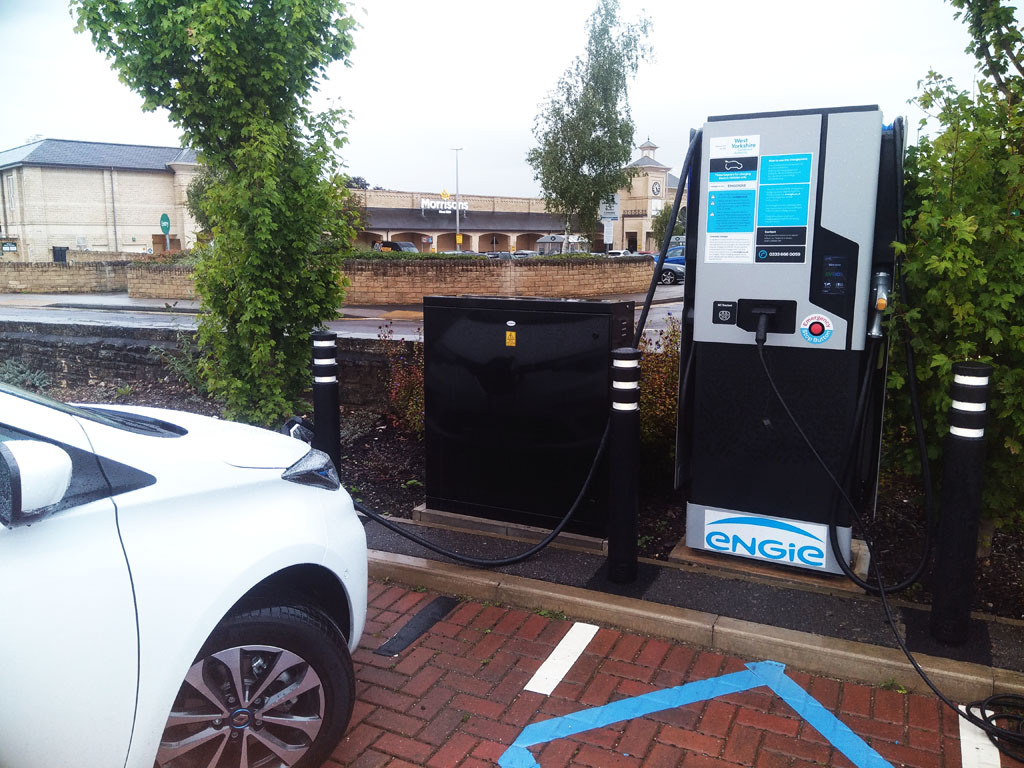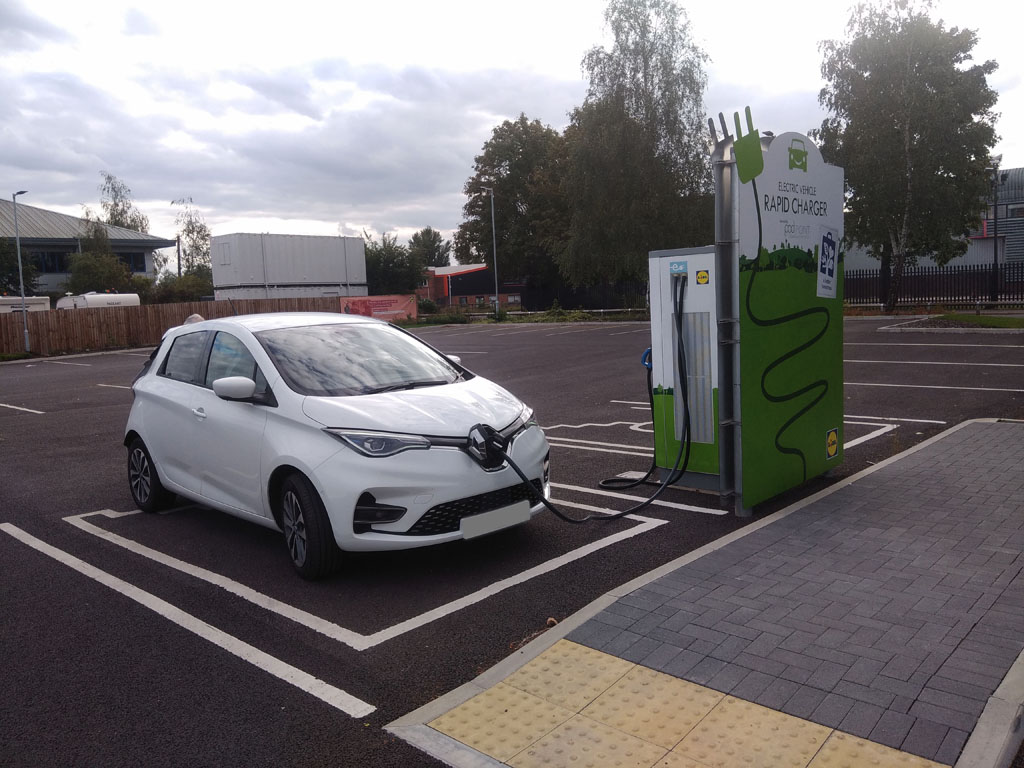Owning and Running an Electric Car
Some information which might be useful for anyone considering an electric car - our experience, updated in December 2021.
Buying an electric car
The capital cost of an electric car is still greater than that of a conventional vehicle, but the costs are coming down rapidly, and are expected to be similar to a fossil fuel car within a few years. In Scotland as of December 2021, you can apply for an interest free 6 year loan from the Scottish Government, funded through Transport Scotland, for your first electric vehicle. If you time it right, this goes into your bank account before you have to pay for the car.
There is also a UK Government grant, currently of £1500 which will reduce the cost of buying an EV.
Leasing an electric car
Another possibility is to lease an electric car. You never own it, and the monthly repayments can be almost as expensive as buying it with the interest free car loan. However, it is a more flexible solution as you might not have to lease it for very long, e.g. 3 years, so it might suit some people.
Octopus Energy offer business leasing, and for domestic customers who lease a Nissan Leaf in south-east England, the Powerloop vehicle to grid system is available on a trial basis.
Powerloop requires you to plug in your leased Nissan Leaf at night before 6pm and at least till 5am. During that time, your car's battery may be used to support the grid during the evening peak, then later recharged when excess power is available in the middle of the night. See Powerloop.
Running Costs
The running costs of an electric car are less than a fossil fuel one, because the electricity costs less than petrol or diesel, and servicing is easier and cheaper. Already, the difference in the total cost of ownership over several years of an electric versus a fossil fuel car is quite small. Electric cars with a decent specification also seem to be holding their value well.
We chose a Renault Zoe ZE50 with a rapid charging facility on board because it seemed the best range and the fastest charging for the money. If considering a long journey, it is essential to have rapid charging capability on the car, and for long journeys to be able to use either CCS or CHAdeMO public chargers (the type depends on the type of car - e.g. the Renault Zoe uses CCS and a Nissan leaf uses CHAdeMO). Both types of public charger are commonly available, but CCS is becoming the European standard and then number of CCS chargers is increasing more quickly than then number of CHAdeMO chargers.
Range
The Zoe is supposed to do 238 miles on one charge, according to the WLTP cycle.
In the summer when it was at its most economical, it was doing 5 miles per kilowatt hour in town, as you drive slowly and as every time you decelerate, it recovers energy into the battery.
In the summer it should do more than 220 miles, depending on the type of driving. In the winter, with the heater on and a cold battery, it is less than 4 miles per kWhr, and the range estimated by the car is about 190 miles if driven gently for local journeys, but almost certainly less on the motorway, probably 180 miles. Because of Covid-19 travel restrictions and less than usual household mixing, we have done very little motorway driving in the winter as yet, so we can't confirm an exact figure. It helps the range if you pre-heat the car while it is plugged in, then you use the heater less while driving. The range also varies a lot depending on how you drive.
Charging at Home
Where possible, charging is done mostly at home using a charging point, in our case in our garage and installed by BP Chargemaster as part of the car purchase. You need a garage or a driveway to install a home charger. Your electricity supplier will probably have a cheap rate in the middle of the night, for example Octopus Energy has the Octopus Go tariff which gives a 4 hour window from 12.30 am to 4.30 am, during which you pay only 4.7 pence per kWhr (other more expensive tariffs are available). You simply program the car to charge during the cheap rate time, plug it in, and leave it to get on with it.
The My Renault App
This app is available for Android or Apple smartphones.
Although it has a number of other functions, it is most useful for checking the car's range and percent charged while it is plugged in at a public charger but you are somewhere else, starting or stopping charging remotely at home, or starting the pre-conditioning which warms the car up for you in the winter.
Public Charging in Scotland
When going on a round trip of more than 200 miles, you will need public charging, preferably rapid charging. You can obtain an RFID Card from ChargePlace Scotland, which gives you access to a large number of charging points many of them rapid chargers. To test out public rapid charging for the first time, we went to the Riverside Museum where there is a ChargePlace Scotland rapid charger, and to the Crowne Plaza to test out what is now called the BP Pulse network. Both worked. Some of the Chargeplace Scotland rapid charging points are still free - the tariff is set by the owner of the charging point, and many which were formerly free of cost are now charging a fee.
Public Destination and on-street slow charging points
There are hundreds of these across Scotland, but many thousands will be needed, especially in cities and towns to cater for people who do not have a driveway or garage where they can install a charging point. Some of these charging points are sometimes ICE'd up (occupied by an Internal Combustion Engined vehicle parked in the space which should be clearly marked as reserved for electric car charging, but sometimes doesn't have any such markings.
There is a distinct lack of destination charging points, which would allow you to charge while doing something else. For example if you want to drive to a nature reserve, and charge up there while birdwatching, forget it! Perhaps that situation will be improved in a few years, but it is currently too expensive for conservation organisations to install charging points.
Public Rapid Charging Points in the UK (including Scotland, but mainly about England)
There are many different companies which provide public chargers across the UK.
Those we have found most useful for a journey from Glasgow to southern England are:
- ChargePlace Scotland - the last free chargers going south just off the M74 are at Abington and Crawford
- Gridserve Electric Highway - good for Motorway Service Station charging
- Instavolt- the most reliable network catering for all types of EV
- BP Pulse- the network with the largest number of charging points in the UK
- Shell Recharge - mainly at Shell petrol stations
- Osprey- a rapidly expanding network of rapid chargers
- PodPoint- a network of rapid chargers at Lidl (the cheapest rapid chargers) and slower but often free ones at Tesco
More information about charging points is readily available on the Zap-Map App and website. Other Apps such as WattsUp are also available.
Our First Electric adventure to England
We had ordered the car in December 2019. Because its availability had been delayed till July 2020 due to the Covid-19 outbreak, there was plenty of time to research public charging points.
After 3 weeks of ownership, and a relaxation of lockdown restrictions, it was time to visit family in Nottinghamshire and Oxfordshire. We charged up fully overnight at home, and started mid morning in late August with a reported 235 miles of range. The idea was to charge up whenever the range dropped below 100 miles, to allow flexibility for broken or unavailable chargers.

|
By the time we got to Gretna Green, it was time for lunch, so we drove into the service area wondering what the situation would be. We needn't have worried - the Ecotricity chargers were both available, but only one had a CCS rapid charging cable, and the other was too slow to be useful on a long journey. I followed the instructions on the charger screen, started the Ecotricity App on my phone and plugged in the car. After talking to the car, it started charging. The App told us the rate of charging and the cost, and emailed me a receipt when we finished charging - 47 minutes of charging for £5.13, from 162 miles of range to 238 miles. If that hadn't worked, plan B was to try another charger in Gretna village, or the next ones down the road at Todhills rest area, on the A69 in Carlisle, Southwaite Services, or Booths or Morrisons in Penrith, or the Rheged Centre on the A66 outside Penrith. Then it was down the M6, and across the Pennines on the A66, (being careful to avoid Barnard Castle as my eyes were fine). From Scotch Corner, it was a short hop to Wetherby, where we knew there was a free Engie charger at the Cluster of Nuts car park. After a 10 minute wait while a Nissan Leaf finished charging, we plugged in again and went to Morrison's. The range increased from 99 to 232 miles in just over an hour while we had our tea. If that hadn't worked, there were several other Engie chargers in Yorkshire (free until October 2021), and many others. The rest of the journey consisted of an overnight stop with relatives in Nottinghamshire, then in the morning it was on down the M1, where after a 15 minute wait at Watford Gap (for a Nissan Leaf to finish charging), we charged up from 85 to 212 miles, for £5.88. If that hadn't worked, there are plenty of chargers in Milton Keynes, including at the Milton Keynes Coachway (bus station) just off the M1. We now had enough range to get to near Wallingford in South Oxfordshire, where we were staying. |

|

|
On the way back, we tried the west coast route. After charging up the previous night at a PodPoint charger at Lidl in Wallingford, there was more than enough range to get to Norton Canes on the M6 Toll, where nobody was waiting at the charger and we charged up while having a coffee from 124 miles range to 89% or 210 miles range in 45 minutes, free - thanks Ecotricity! So it was on to try our luck at Charnock Richard services on the M6. This proved to be the only charger problem encountered - Ecotricity's only rapid charger wasn't working. There was a "fast" charger (i.e. a slow charger!) but we ignored that as we didn't want to waste time and had plenty of range, so we went on to Forton (Lancaster) services, where we charged from 95 to 196 miles in 47 minutes, enough time to eat lunch. On through the Lake District to the last charging point in England - Todhills just before the Scottish border. Another free charge in 51 minutes from 111 to 200 miles, plenty to get home to Glasgow - thanks again Ecotricity! We arrived home with 89 miles of range.It had taken a bit longer than it would have in a piston car, but this being our first experience of a long journey in an electric car, we were erring on the side of caution. The big plus is that with the Zoe's range of up to 230 miles, it turned out to be a matter of range planning rather than range anxiety. |
The future
The challenge for the country now in trying to increase electric car usage is to increase the number of chargers on motorways, where Ecotricity chargers have mostly been replaced by new chargers installed by Gridserve.
Alternative charging places are available, but you would sometimes have to drive off the motorway to reach them, e.g. slightly off the M40 at Banbury is a cluster of 8 rapid chargers run by Instavolt, with another Instavolt cluster of 4 chargers at Booths in Garstang off the M6 between Preston and Lancaster. Lidl are doing a big roll-out of Pod Point chargers at many of their stores, which is a good start, but usually just one charger per store - not ideal, as it means that you cannot rely on it.
In the meantime, many other companies (too many to name) are involved in providing chargers. Most of the rapid chargers can now take credit card payment including contactless, and the number of chargers is increasing by the week. Each company has its own website and/or App with maps to guide you to their chargers, and a payment facility on the website or App. Some companies have RFID cards. There is still no overall system, but I expect the position to become simpler over the next few years, as companies and systems are merged. New rapid chargers all use contactless, so there is now less need for Apps than there was even a year ago.
At the moment, if you are unlucky, you may experience some inconvenience, and it would be wise to plan a long journey in advance. Fortunately, you can enlist the help of Zap-Map, an App and website which works on a smartphone, tablet or computer, where you can get an overall picture of the tens of thousands of charging facilities which there already are in Britain, and give you almost real-time information about their availability. Zap-Map is now available for Android Auto and Apple CarPlay, so you will be able to get it on the your car's infotainment screen.
The ideal public charging model seems to be the electric forecourt which has just opened at Braintree in Essex. This has been constructed by Gridserve, and can take up to 36 electric vehicles at once, mostly on rapid chargers, and has a canopy like a petrol station, and facilities such as Booths supermarket, Costa, WH Smiths, toilets and a lounge where you can wait while your car charges. It is the first of 100 such sites planned to open in Britain in the next 5 years. The next one is near Norwich, so not much use for most Scottish people!
In the meantime, many new hubs are being constructed, notably by Gridserve, where at Rugby Services there are now 12 rapid chargers in addition to the Tesla cluster, and many more will be rolled out in 2022. On the Midland Links part of the M6, Instavolt have 7 chargers one way and 8 chargers the other way at Corley Services.
More on the rollout of Gridserve Electric Highway chargers as at the end of December 2021
Gridserve Electric Hubs
These will have 6 to 12 rapid chargers.
Currently in construction: Swansea (Moto), Heston West (Moto), Severn View (Moto), Wetherby (Moto), Burton in Kendal (Moto), Exeter (Moto), Woolley Edge North (Moto), Woolley Edge South (Moto), Thurrock (Moto), Leigh Delamere Westbound (Moto), Reading West (Moto).
Gridserve Electric Forecourts®
These will have a covered area like a petrol station, many chargers and purpose-built onsite facilities.
Currently in operation - Braintree Electric Forecourt®
Currently in construction: Norwich Electric Forecourt® (opening April 2022), Gatwick Electric Forecourt® (opening Autumn 2022).
To keep up to date with the story of Gridserve's Electric hubs, try this page:
Gridserve Electric hubsFinally, Gridserve are still testing the software which should double the number of connections at their rapid charging points. The installation of this software has been delayed, but once the upgrade is performed, two cars will be able to charge at once at each charger. At the moment, it's first come, first served, even although there are two cables.
The electric car story continues with updates on these pages:
Our electric car adventure July 2021
